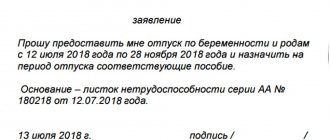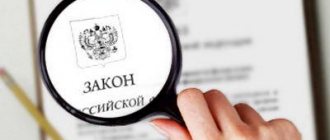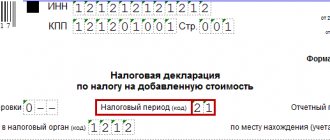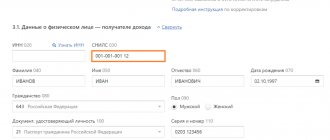26.06.2019
0
340
4 min.
A sick leave certificate is the main document indicating a previous illness or injury. It is the only basis for calculating insurance payments, the amount of which is established by the accounting department of the enterprise. The information on the forms is presented in such a way that it can only be understood if you have certain knowledge. Sick leave codes and their decoding allow you to make the correct accruals.
Basic Concepts
A certificate of incapacity for work is an official document that confirms that an employee is undergoing outpatient or inpatient treatment. This is the basis on which payments are calculated, and absence from work is considered valid.
The document is drawn up according to the form that was approved by Order of the Ministry of Health No. 347n dated April 26, 2011. It can be provided in either standard paper or electronic form. The employer’s task is to fill in his part, separated by a transverse line. The main information is entered by the attending physician.
The sheet includes the following information:
- the first is filled out by the doctor;
- the second - by the employer;
- tear-off - drawn up by the doctor, but kept for reporting purposes.
The final section includes the patient's signature. This indicates the transfer of a certificate of incapacity for work. It is necessary to confirm the document has been issued in person.
Attention! The form can be filled out with any pen, except for ballpoint pen. It can be feather, gel, capillary.
When a medical institution issues a bulletin with code “08”
The corresponding procedure for issuing sick leave certificates is approved by Order of the Ministry of Health and Social Development of the Russian Federation No. 624N dated June 29, 2011 (as amended on November 28, 2017). It is this order that medical institutions are guided by when opening, registering, extending, and closing sick leave.
A bulletin with code “08” is issued when, after undergoing inpatient treatment, the patient is sent for further treatment (recovery, rehabilitation) to a specific sanatorium.
Simply put, the patient was given a sick leave, he was treated in a hospital, but this turned out to be not enough. Then the patient was sent for further treatment to a specialized sanatorium and for this reason the bulletin was extended, indicating the code “08”. The maximum period for such an extension is limited to 24 days.
The exception is 2 situations indicated by Part 4 of Order No. 624 N. Thus, it is prescribed that patients with tuberculosis and persons who suffered as a result of a serious accident at work should be sent to a sanatorium, extending the hospital certificate for the entire period of follow-up treatment and travel.
Important! Only those who really need it are sent to a specialized sanatorium for further treatment.
The referral issued to the patient allows not only to receive further treatment at the expense of budgetary funds, but also to receive social benefits (sickness benefits). The main document that is accepted for the assignment and payment of social benefits is a correctly executed ballot.
Important! The procedure for providing sanatorium follow-up treatment (rehabilitation), including issues of financing, is established by the constituent entities of the Russian Federation independently.
For example, at the governmental level in Moscow, an appropriate procedure has been approved for referring patients from among working Muscovites for further treatment (Moscow Government Decree No. 591-PP dated July 27, 2010). Key point: the applied procedure is relevant for citizens who have Moscow registration.
| Who refers for aftercare | Maximum period of free travel | Where do non-follow-up treatments go? |
| Profile health care facility | Up to 24 days | To one of the sanatoriums on the territory of the Russian Federation |
This Procedure also defines a specific list of diseases for which health care facilities have the right to issue a referral to a patient for sanatorium follow-up treatment. This includes, for example, acute myocardial infarction, treated diabetes, as well as orthopedic operations regarding pancreatitis, gastric ulcers, etc.
Information on sick leave
The form is made in blue, and the columns look like light yellow cells. Added watermarks to provide protection against counterfeiting. On the reverse side there is a condensed instruction on the rules for filling out the sections. The following data entry requirements are established:
- information is filled in manually or by printed means;
- doctors do not make mistakes;
- if the accountant makes mistakes, a correction is made with a signature and seal;
- If lost, a duplicate will be provided.
It is believed that a certificate of incapacity for work is provided for the period of illness and treatment process. In reality, more grounds are established:
- poisoning;
- injury;
- aftercare in a sanatorium;
- exit from quarantine;
- nursing;
- the first time after the adoption of a child;
- other grounds.
Cause of disability codes
Disease codes on sick leave certificates are entered in certain fields. They include two cells for each digit. According to ISCO, the value is possible within 1-15 points. Additional coding is also established, clarifying the details and the basis of the disability.
Decoding disability codes on sick leave:
| 01 | An indication of illness if the employee was absent due to a viral infection or cold. The insurance payment is assigned in full. |
| 02 | Assigned when an injury occurs outside the workplace. The payment is processed in full. The employer pays only for 3 days, then the money is transferred to the Social Insurance Fund. |
| 04 | Characteristic of a work injury. The benefit is paid by the Social Insurance Fund from the very beginning of the illness. |
| 09 | Indicated if a certificate of incapacity for work is issued due to caring for a family member. Information is given about the patient's age, name, and degree of relationship. |
| 11 | Indicates a disease that threatens other people. It could be tuberculosis or hepatitis. |
| 31 | If the attending specialist extends sick leave, “continues to be ill” is indicated. |
The cause of disability sometimes changes during illness. In the column “change code” one of two diagnoses is indicated. When calculating the amount of benefits, the accountant pays attention to this.
Additional codes
Decoding the sick leave also applies to additional columns, since here the information is also encoded. Information expected:
- Additional code. The basis of the injury or disease is indicated. A note is made if the reason is intoxication or taking illegal drugs. This leads to a reduction in the sum insured.
- Enabling relatedness. So, code 38 means that the mother is caring for the child. In this case, the basic data is reflected with code 09 in the corresponding field.
- The regime was violated. When entering code 24, the decoding determines failure to show up to the doctor at the appointed time.
- Other information is indicated. So, code 36 indicates that the employee did not come to the next appointment without a good reason.
- Code 020 is entered for additional maternity leave.
Relationship codes
Relationship information is often entered when a sick child is being cared for. The classification includes one of the following entries:
- 38 and 39 - mother or father, respectively;
- 40 - official guardian code;
- 41 - data of the trustee;
- 42 - information about a close relative who is not an official representative.
As in other situations, the code on the sick leave certificate is needed to determine the amount of insurance payment.
Codes for employer
For the accounting department of an enterprise, a special line is provided - “Calculation conditions”. The relevant data is entered into the subordination code section. The column includes 5 digits and is assigned to the organization upon registration with the Social Insurance Fund. The information is contained in the notice. They can also be clarified directly with the Foundation.
If there were no violations on the part of the patient, and the illness did not objectively occur due to intoxication, the insurance payment is provided in full. Employees with more experience do not face a decrease in income. If the employee is at fault, the payment may be significantly reduced.
Sick leave must be provided in a timely manner, immediately after returning to work. This confirms a valid reason for absence. The document is sent to the accounting department on the first day. The information is recorded and affects the payment speed. After receiving sick leave, a financial department specialist immediately processes it and sends it for payment. If you give it too late, the transfer of money will also be delayed.
Example 1. Referral for further treatment to a specialized sanatorium
A pregnant woman (registered and working in Moscow), after undergoing inpatient treatment (for a high-risk disease), is sent for follow-up treatment to a sanatorium. At the same time, the health facility issues her:
- Free travel for 24 days.
- An extract from the patient's medical history.
- Hospital bulletin.
- Sanatorium and resort card with relevant records regarding the examination, treatment, and medical prescriptions.
In this case, the bulletin after inpatient treatment is extended for the entire period of stay in the sanatorium, i.e. for 24 days. After completing the sanatorium follow-up treatment, the patient receives a return coupon.
The health care facility where the patient is being observed must submit the specified coupon and an extract from the hospital. The ballot is closed, after which the woman hands it over to the employer. Payment is due for 24 days of follow-up treatment.
How to mark violations of the regime
Certain circumstances reduce insurance compensation. One of them is violation of the regime on the part of the employee. Among such disability codes on a sick leave certificate are determined:
- 23 — violation of the treatment schedule;
- 24 — missed visits to the doctor, including multiple failures to contact the doctor;
- 25 - return without a certificate of incapacity for work, which is equivalent to absenteeism;
- 26 - complete refusal to attend a medical examination;
- 27 - arriving at the commission late;
- 28 - other violations.
Advice! It is important not to violate the hospital regime, especially when it comes to long-term treatment. This could result in a significant reduction in your payout. The doctor enters data that is interpreted before benefits are calculated.
Payment for a newsletter with code “08” (for sanatorium follow-up treatment)
The general procedure for paying for sick leave states that social benefits must be accrued and paid for all days of illness. That is, time is taken into account, starting from the first day of illness and right up to recovery. This includes: weekends, holidays, non-working days (Part 1 of Article 6 of the Federal Law of the Russian Federation No. 255 of December 29, 2006). But there are exceptions to the general rule. They also apply to the period of follow-up treatment of the patient after his hospital stay.
Thus, an employee who was treated in a hospital and was then sent to a specialized sanatorium for further treatment is entitled to social benefits. For the general case (when we are not talking about patients with tuberculosis): up to 24 days of follow-up treatment in a Russian sanatorium are paid for each individual case.
Please note:
- The established limitation - payment for only 24 days - applies to one case.
- If we take the entire calendar year, then there are no restrictions on payment for the number of days per year as such.
Justification - Part 2 of Art. 6 Federal Law of the Russian Federation No. 255 dated December 29, 2006.
Answers to frequently asked questions
Question No. 1: The patient was issued a hospital certificate with code “01” for 14 days (during inpatient treatment). Then the bulletin was extended, indicating the code “08” for another 22 days (for follow-up treatment). How many days will he be paid for his sanatorium follow-up treatment?
According to legislative norms, the following are taken into account: general illness, the number of days of sanatorium follow-up treatment, and there are only 22 of them.
According to Art. 6 Federal Law of the Russian Federation No. 255 of December 29, 2006, no more than 24 days of follow-up treatment after hospitalization are paid. Accordingly, here the patient must receive social benefits for all 22 days of stay in the sanatorium.
Common mistakes when filling out a newsletter with code 08
Error 1. Social benefits for the period of follow-up treatment after hospitalization are paid only on the condition that the patient received follow-up treatment in a Russian sanatorium. Accordingly, if follow-up treatment did not take place on the territory of the Russian Federation, then social benefits are not assigned. This is the general norm, which is enshrined in Part 2 of Art. 6 Federal Law of the Russian Federation No. 255 dated December 29, 2006.
Error 2. It should be understood that the procedure for paying social benefits during aftercare, which requires payment for no more than 24 days, is mandatory and cannot be contested.
It follows that if the employer mistakenly pays social benefits for after-care in full, without taking into account the restrictions and the established limit, then the FSS of the Russian Federation will not compensate him for such expenses.









